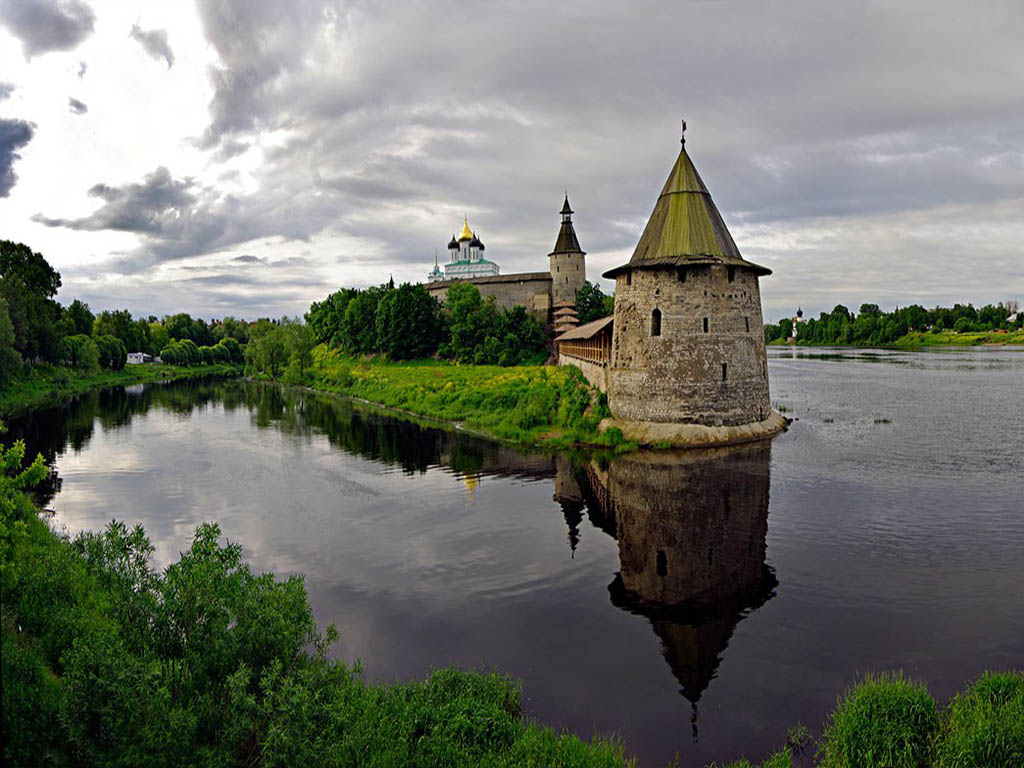Russia’s Mirozhsky Monastery, the Pskov Kremlin, Pokrovskaya Tower and 15 other Pskov monuments from the 12th to the 17th centuries are among those that may soon be added to the United Nations Educational, Scientific and Cultural Organization (UNESCO) list of World Heritage Sites.
“Our application has been reviewed, today Minister of Culture Vladimir Medinsky supported the nomination,” said the Director of the Tourist Information Center of the Pskov region, Anna Remov, according to TASS.
“This year, an Expert Commission of UNESCO will come to Pskov, which will review the objects and the environment, where they are located. Therefore, we can make it to the World Heritage List in 2019,” Remova said.
UNESCO began in 1972 and was an outgrowth of the World Heritage Convention, which sought to protect and preserve sites of outstanding importance, either cultural or natural, that feature historic or scientific heritage for all mankind.
“We proposed 18 monuments of Pskov for inclusion in the UNESCO World Heritage List, the main part of the monuments belongs to the 14th - beginning of the 15th century,” Remova said.
Among the historical buildings, which are currently awaiting review by UNESCO are structures that were established in Pskov city located in northwestern Russia during the 12th to 17th centuries and contain elements of Byzantine and Novgorod architecture.
“All these objects show unique Pskov architecture, which is notable for its style, it is the Pskov medieval architectural school,” noted Remova.
The Mirozhsky Monastery has a long and incredible history. With beautiful frescoes dating to the 12th century, the Mirozhsky Monastery, also known as Christ Transfiguration Cathedral, was the city’s first stone-made church that was decorated with wall paintings. In the 18th century the frescoes were whitewashed, but a century later they were discovered beneath the paint during repair works of what is a cross-shaped cathedral.

The Pskov Kremlin is also under review to be added to the UNESCO list, as it is considered one of the best examples of ancient Russian defensive architecture. By the end of the 17th century, there were about 39 strong walls with the height and thickness of eight and six meters, respectively, but most of them were destroyed during World War II. Kutekroma Tower, or “the tower in the corner of the Kremlin”; Vlasyevskaya Tower; Rybnitskaya Tower, or the tower of the Holy Gates; Dovmontova, also known as Smerdy's Tower, all survived and have been preserved to this day.
The fortress has survived dozens of wars and sieges and surrendered only to the Fascist invasion during WWII.

Being listed as a world heritage site by UNESCO brings an added level of attention to sites, and expectations that tourism will increase. Russia currently has 28 sites on UNESCO’s list.







 Azerbaijan and Armenia started the process of demarcation of their border on Tuesday, with the installation of the first border markers based on ge...
Azerbaijan and Armenia started the process of demarcation of their border on Tuesday, with the installation of the first border markers based on ge...
 Armenian sappers commenced on Monday mine-clearance operations in the territories adjacent to the Saint Mary Church in village of Voskepar (Armenia...
Armenian sappers commenced on Monday mine-clearance operations in the territories adjacent to the Saint Mary Church in village of Voskepar (Armenia...
 Iran has refuted reports of alleged damage to Shimon Peres Negev Nuclear Research Centre located southeast of Dimona, Israel, during the recent air...
Iran has refuted reports of alleged damage to Shimon Peres Negev Nuclear Research Centre located southeast of Dimona, Israel, during the recent air...
 Iran’s Foreign Minister, Hossein Amir-Abdollahian, has labeled a foiled Israeli drone attack in certain parts of the country as a "failure" for Isr...
Iran’s Foreign Minister, Hossein Amir-Abdollahian, has labeled a foiled Israeli drone attack in certain parts of the country as a "failure" for Isr...



